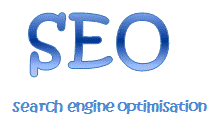Making content web friendly
Websites are about information so it makes sense that you need to provide good content if you want your website to be successful.
Obviously, a site with fantastic content that is hard to find can only have limited success so there needs to be a balance between the content and the site itself being user friendly.
Without going into web design aspects of a site, here are some of my top tips for making your web content usable and attractive:
- keep each page focussed and a reasonable length (300 to 500 words is usually ideal). If there is additional information that could potentially help some site visitors, put it on a new page and link to it rather than putting everything into one page.
- use headings and sub-headings. There are a number of reasons for this – it makes the text visually more apepaling, is easier to skim read, helps focus and define sections of text and can help with search engines (especially if you use heading styles rather than manually adding font styles).
- use white space. For example, I am adding an empty line between each of these bullet points so it is easier to see the difference between them and the page doesn’t look so text heavy.
- don’t feel your website has to explain everything. I have had many clients who put too much information into their text ‘just in case’ a client wants to know those details. People get bored and/or overwhelmed by too much details, especially on websites, so keep it simple by giving the important details. You can always link to the fine details or encourage them to contact you for them.
- web content is not like a novel, or even a school essay, so get to the point fast. A beautiful introduction may be very nice but will frustrate someone who is trying to decide if you can provide the service/product they are after. If a long introduction and sales pitch means the real informatoin is so low on the page you have to scroll to read it, you can bet not many people will actually read it.
So prioritise your information and put the important bits first. - Keep your content fresh, up-to-date and error-free. Spend some of your website maintenance time adding new content and reviewing the current site (for instance, when did you last check for faulty links on your site?)
- Write for human beings, not search engines. That means don’t add too many keywords and concentrate on providing useful information rather than trying to impress a search engine.


 By far the easiest way is to submit informative articles to various web sites and ezines. That doesn’t mean you submit an article about you or your business as that will bore and annoy your readers. What you have to give them is good information about something relevant to your business, something they can use and appreciate you for.
By far the easiest way is to submit informative articles to various web sites and ezines. That doesn’t mean you submit an article about you or your business as that will bore and annoy your readers. What you have to give them is good information about something relevant to your business, something they can use and appreciate you for.
Recent Comments